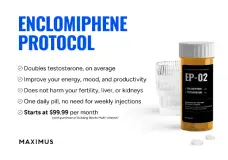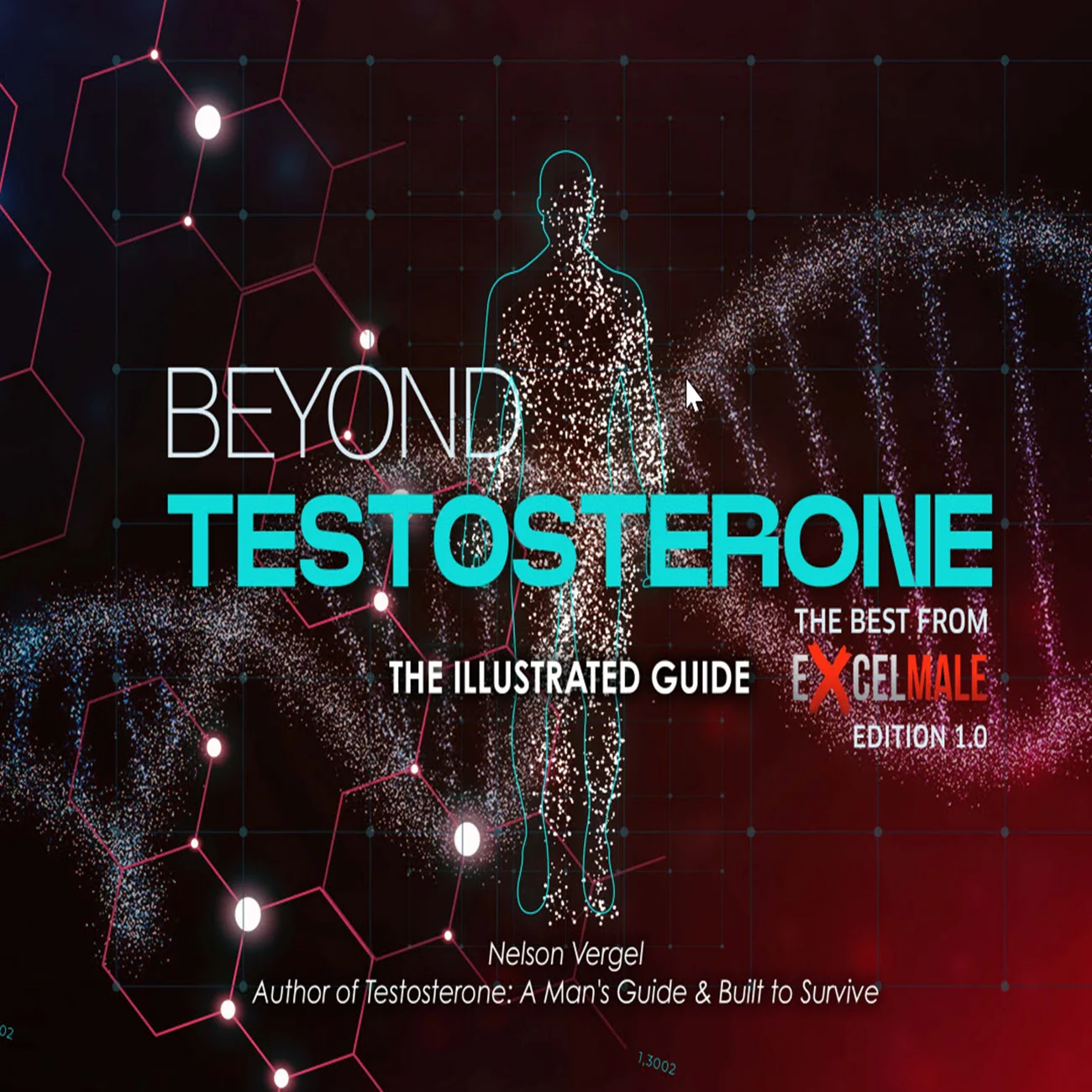Just curious if anyone knew why they changed the reference range?
The reference range used to be 46-224pg/ml for free testosterone by equilibrium dialysis. In 2025 it changed to 35-155pg/ml. That's roughly 1.4% of the total testosterone reference range (250-1100ng/dl). 1.4% of 250 is 35. 1.4% of 1100 is 154. Seems odd. I emailed med fusion asking about it, including the link to the 2022 equilibrium dialysis article. I'll post if they respond.
They never changed the reference range.
The reference range 46-224 pg/mL is for the Quest calculated method using a modified Vermeulen ( cFTV) equation.

testdirectory.questdiagnostics.com
The reference range 35-155 pg/mL is for the Quest Equilibrium Dialysis assay.

testdirectory.questdiagnostics.com
Even then Quest''s ED assay is not the same as the ED assay used in the Jasuja/Bhasin paper that I posted back in 2022 before it was released.
The reference ranges given in that paper only apply to that specific assay (ED device/procedure).
The reference ranges in that paper are not set in stone!
As of now there is no standardized ED procedure/assay or harmonized reference range for free testosterone!
Also need to understand that when it comes to the confusion of the currently used/relied upon ED methods between laboratories for testing free testosterone everyone needs to keep in mind that not all ED devices/procedures are the same.
Again you heard it here first only at Nelson's
ExcelMale!
@Nelson Vergel
Was going to drop this bomb a few days ago but you let down the curtains early LOL!
Reference Intervals for Free Testosterone in Adult Men Measured Using a Standardized Equilibrium Dialysis Procedure (2022)
Ravi Jasuja, Ph.D.; Karol M. Pencina, Ph.D.; Daniel J. Spencer, BS; Liming Peng, MS; Fabiola Privat, BS; Waljit Dhillo; MD, Ph.D.; Channa Jayasena, MD, Ph.D.; Frances Hayes, MD; Bu B. Yeap, MB, BS, Ph.D.; Alvin M. Matsumoto...
Hitting the nail on the head!
* Because of the wide variation in the equilibrium dialysis procedures, the reference ranges are not generalizable across laboratories
* These reference ranges, generated in a reference sample of healthy men, should not be applied to other assays in other laboratories without appropriate cross-calibration of assays. Differences in study populations, time of sample collection, and testosterone assays can contribute to the differences in reference ranges. The adoption of a standardized procedure for measuring free testosterone and cross-calibration of the testosterone assays against an accuracy-based benchmark such as the CDC's HoST program will facilitate the application of these reference ranges across laboratories
* The accuracy and precision of the total testosterone assay also affect the precision and accuracy of the measured free testosterone concentration. Most commercial laboratories do not report the buffer composition and other dialysis conditions which renders it difficult to evaluate their methods; the procedures for equilibrium dialysis have varied even in published reports from academic research laboratories (2,24,32-37). Because of the wide variation in the equilibrium dialysis procedures, the reference ranges are not generalizable across laboratories
Some critical points here!
* An expert panel of the Endocrine Society (9) reviewed the various methods for determining free testosterone (4,5,9,21-32) and concluded that each method has some inherent limitations but that the equilibrium dialysis method is the reference standard against which all other methods should be compared (33). However, substantial heterogeneity in the procedures used by various laboratories for performing the equilibrium dialysis assay has contributed to variability in the reported free testosterone values
* Furthermore, the determination of free testosterone concentration by equilibrium dialysis is affected greatly by the assay conditions, including the buffer composition, the incubation time, and the temperature
* The accuracy and precision of the total testosterone assay also affect the precision and accuracy of the measured free testosterone concentration. Most commercial laboratories do not report the buffer composition and other dialysis conditions which renders it difficult to evaluate their methods; the procedures for equilibrium dialysis have varied even in published reports from academic research laboratories (2,24,32-37). Because of the wide variation in the equilibrium dialysis procedures, the reference ranges are not generalizable across laboratories
* In healthy nonobese men, 19 years or older, the 2.5th, 10th, 25th, 50th, 75th, 90th and 97.5th percentile values for absolute free testosterone were 66, 91, 116, 141, 190, 240, and 309 pg/mL, respectively (Table 3). To convert standard units (pg/mL) to SI units (pmol/L), please divide the concentrations in pg/mL by 0.2885. In the subset of men, 19 to 39 years, the corresponding 2.5 th, 10th, 25th, 50th, 75th, 90th and 97.5th percentile values for absolute free testosterone were 120, 128, 149, 190, 228, 274, and 368 pg/mL. By convention, the 2.5th percentile of the reference sample defines the lower limit of the reference range and the 97.5th percentile value defines the upper limit (46,47). By this convention, the normal range in the reference sample of men 19 to 39 years is 120 to 368 pg/mL (415 to 1274 pmol/L) and, in all men, the range is 66 to 309 pg/mL [229 to 1072 pmol/L], respectively
* These reference ranges, generated in a reference sample of healthy men, should not be applied to other assays in other laboratories without appropriate cross-calibration of assays. Differences in study populations, time of sample collection, and testosterone assays can contribute to the differences in reference ranges. The adoption of a standardized procedure for measuring free testosterone and cross-calibration of the testosterone assays against an accuracy-based benchmark such as the CDC's HoST program will facilitate the application of these reference ranges across laboratories
* Using this standardized equilibrium dialysis method coupled with a HoST-certified LC-MS/MS assay for measuring testosterone in the dialysate, described in detail here to enable its easy replication across laboratories, we report for the first time the distribution of free testosterone levels in a prospectively collected sample of carefully screened healthy men, 19 years or older. The range of free testosterone levels (2.5th to 97.5th percentile values) in healthy nonobese men, 19 years or older, is 66 to 309 pg/mL (229 to 1072 pmol/L), and in a reference sample of nonobese healthy young men, 19 to 39 years, is 120 to 368 pg/mL (415 to 1274 pmol/L). The distribution of free testosterone levels by age group is also reported. These normative data can potentially be applied after appropriate cross-calibration to other laboratories that perform the equilibrium dialysis under similar standardized conditions and use a testosterone assay that is certified by an accuracy-based standardization program such as the Center for Disease Control and Prevention's HoST program. Further studies are needed to determine how these reference intervals apply to the diagnosis of androgen deficiency in clinical populations and in men of different races and ethnicities in different geographic regions
Jasuja 2022 (
https://onlinelibrary.wiley.com/doi/abs/10.1111/andr.13310)
*
Equilibrium dialysis was performed in 96-well plates (Harvard Apparatus, Holliston, MA) with semi-permeable membranes that allow species less than 10 kDa to pass through (41,43)
41. Zakharov MN, Bhasin S, Travison TG, Xue R, Ulloor J, Vasan RS, Carter E, Wu F, Jasuja R. A multi-step, dynamic allosteric model of testosterone's binding to sex hormone binding globulin. Mol Cell Endocrinol. 2015;399:190-200.
43. Jasuja R, Spencer D, Jayaraj A, Peng L, Krishna M, Lawney B, Patel P, Jayaram B, Thayer KM, Beveridge DL, Bhasin S. Estradiol induces allosteric coupling and partitioning of sex-hormone-binding globulin monomers among conformational states. iScience. 2021;24(6):102414
This is key!
* Our normative ranges are similar to those reported by pioneers of this field using the legacy method (2) but the percent free testosterone in our reference sample differs from that reported by another laboratory (10,52); this difference in percent free testosterone from that reported by another research laboratory (<2.8%) could be due to differences in buffer composition or in other assay conditions that are not apparent in the published methods (10,52). The normative ranges of most commercial laboratories have changed substantially in recent years suggesting changes in their procedures over time (53,54); because procedures used by the commercial laboratories and the details of how reference ranges were derived are not published, an evaluation of these procedures was not feasible.
10. Vermeulen A, Kaufman JM, Giagulli VA. Influence of some biological indexes on sex hormone-binding globulin and androgen levels in aging or obese males. J Clin Endocrinol Metab. 1996;81(5):1821-1826.
52. Fiers T, Wu F, Moghetti P, Vanderschueren D, Lapauw B, Kaufman JM. Reassessing Free-Testosterone Calculation by Liquid Chromatography-Tandem Mass Spectrometry Direct Equilibrium Dialysis. J Clin Endocrinol Metab. 2018;103(6):2167- 2174
As usual Nelson's house is where it's at!
Thursday, March 27, 2025 at 1:00 PM Eastern Daylight Time.

event.on24.com
Testosterone imbalances affect men, women, and children differently. In males, testosterone deficiency (hypogonadism) can lead to low libido, fatigue, and muscle loss, while excess may contribute to aggression and cardiovascular risks. In females, testosterone excess (hyperandrogenism), often associated with polycystic ovary syndrome (PCOS) or adrenal disorders, can cause excess hair growth, weight gain, and menstrual irregularities. In children...












